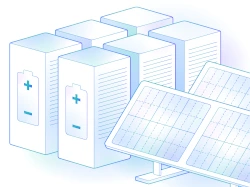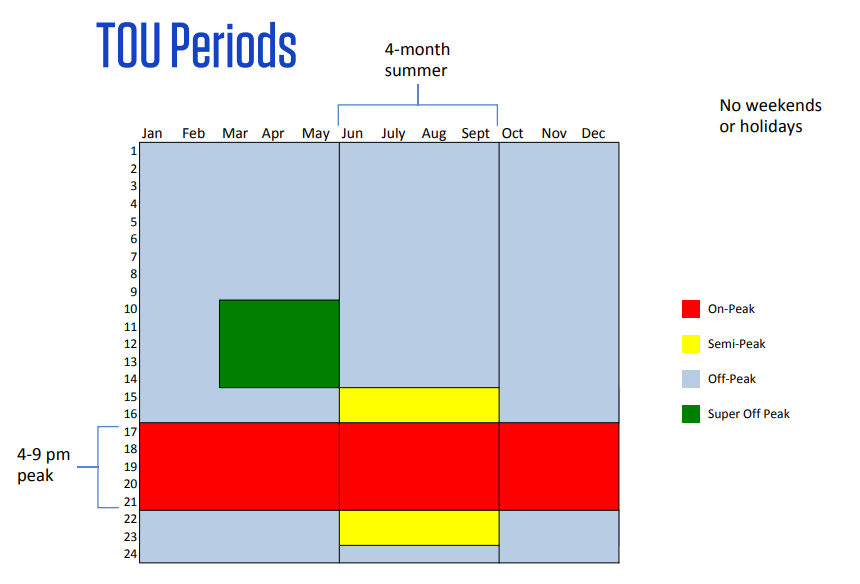In this blog we’ll focus on key changes Pacific Gas & Electric (PG&E) is making to their commercial and industrial (C&I) rates, and the implication they will have on solar and energy storage project economics. These “final decision” rates will become effective voluntarily starting in October of 2019, which stemmed from PG&E’s 2017 General Rate Case (GRC). In part 1 of this blog, we focused on PG&E’s residential rates.
Note: each sub-heading section below hyperlinks to that topic in our recent “Breaking Down PG&E’s 2019 Proposed Rates” webinar.
Key Aspects (E-19, A-10)
The most talked about aspect of the “Final Decision” E-19 and A-10 rates are the new later “on-peak” periods, which are moving much later into the evening. The other key aspects include:
- New “on-peak” period that will move from noon-6pm to 4-9pm
- 4-9pm “on-peak” window will be year-round
- Rates will be moving to a 4-month summer, compared to 6-month summer, 6-month winter
- March, April, May will feature a new “super off-peak” time period
Implementation & Timing
- New “final decision” TOU rates are expected to be available for opt-in starting Oct 2019
- The opt-in transition period of at least 12 months, prior to new TOU rates becoming mandatory
- New TOU rates expected to become mandatory in Nov 2020 (except for grandfathered customers)
- PG&E will be the last of the 3 IOU’s to fully implement their new TOU rates
- PG&E will ultimately default all of its C&I customers onto TOU rates in November of 2020.
Compared to the implementation and timing of the other 2 IOU’s, SDG&E’s rates already went into effect, and SCE’s become voluntary in March of 2019.
Commercial Grandfathering
Commercial customers who qualify for grandfathering protections, get 10 years of protection from PTO (permission to operate). It’s important to mention again that only the TOU periods are being grandfathered. Commercial customers who quality for grandfathering include:
- Commercial private sector customers who submitted initial interconnection applications by 1/31/17
- Public sector customers who submitted initial interconnection application by 12/31/17
- Includes schools, municipalities, etc.
- All new customers going forward, will not get grandfathering protections in the PG&E territory
PG&E rates that traditionally had high TOU price differentials will have a transition period. The glide path will shrink the TOU periods. Even if you have grandfathering protections for your customers, the rates they are grandfathering onto will change. Rates that have traditionally had high/sharp TOU price differentials, like the A-6, will transition to much flatter differentials, as summarized in the table below.
Check out our full “Breaking Down PG&E’s 2019 Proposed Rates” webinar:



